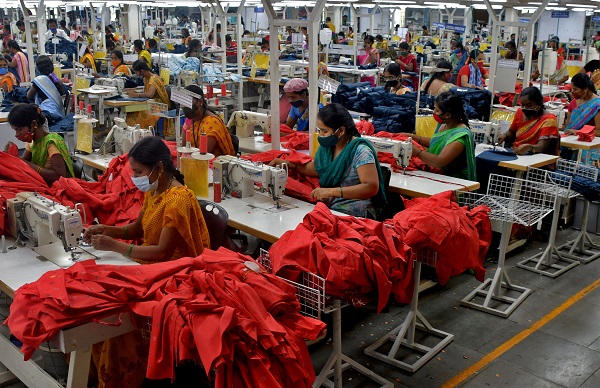
The Indian textile and apparel sector’s export turnover from April to July 2022 was $12.89 billion. The data released by the Confederation of Indian Textile Industry (CITI) recently indicates this sector could face numerous challenges in future. Textile export sector took the biggest hit with a downgrade of 24.15 per cent whilst apparel exports was only 0.6 per cent. The total cumulative decline during July 22, according to CITI, stood at 15 per cent. Overall, apparel export sector stood in a far better position than the textile export sector.
However, Apparel Export Promotion Council (APEC) chairman Narendra Goenka is optimistic, as he believes the economic crisis faced by Sri Lanka, energy crisis in Bangladesh and floods in Pakistan leave an open area for India, which continues to have its raw material intact and can therefore, make up for losses by the end of the fiscal year. T Rajkumar, Chairman of CITI points out although the recession in developed nations slowed down demand for textile products, production disruptions in competing nations would allow India to gain ground. Textile is significant part of India’s merchandise exports worth $313 billion as it contributes 11 per cent and is also an important employer of skilled labor.
Falling currencies cause grief to Indian exports
Whilst the Indian currency is impacted by growing strength of the US dollar, the currencies of India’s competing nations such as Sri Lanka, Pakistan, Bangladesh and Vietnam, have experienced greater weakening compared to India rupee. This leaves India in a situation where it can’t compete cost-wise and is seeing itself being out priced in the global market. The cost of labor in India is no longer competitive either as these four countries have experienced high rates of unemployment suddenly find a huge workforce at extremely low rates. These are external factors that India has no control over and there is nothing it can do about it except seek alternatives to soften the blow.
Will Indian government’s support help?
Realizing the importance of keeping the textile and apparel export sector in good health, the government has stepped up its support but the question remains that will it be enough? The Union Budget of 2021-22 did include the establishment of textile parks which will provide a seamless operation from sourcing of raw material to end product which in turn will lower cost of manufacturing. The sector has also been included for allocations under the Production Linked Incentives (PLI) scheme. This scheme is designed to boost production in the manufacturing sector and attract not only domestic but foreign investments to strengthen it. However, CRISIL Research indicates textile parks and PLI may work out in the future but there is a lot more that needs to be addressed to arrest the decline of the textile and apparel exports sector.
The lack FTAs is also compounding the situation as India’s competitors enjoy a clutch of such deals as under-developed nations. At the moment, the Indian government is looking at two important FTAs with the UK and Australia, which when finalized, should ease the situation a bit but more is required. On July 1, 2022, India and the European Union went back to revive a nine-year-old negotiation towards and FTA that can be a game changer for the former.
The introduction of the Remission of Duties and Taxes on Export Products (RoDTEP) scheme targets the reduction of tax burden of exporting entities. The scheme has also been supported by additional structural reforms that should revive the textile value chain. Whilst the Indian government is trying its best to support the sector with restructures, reforms and incentives, they are not expected to have any significant impact for the next three to four years and the debate at this hour is will it be too little, too late?












